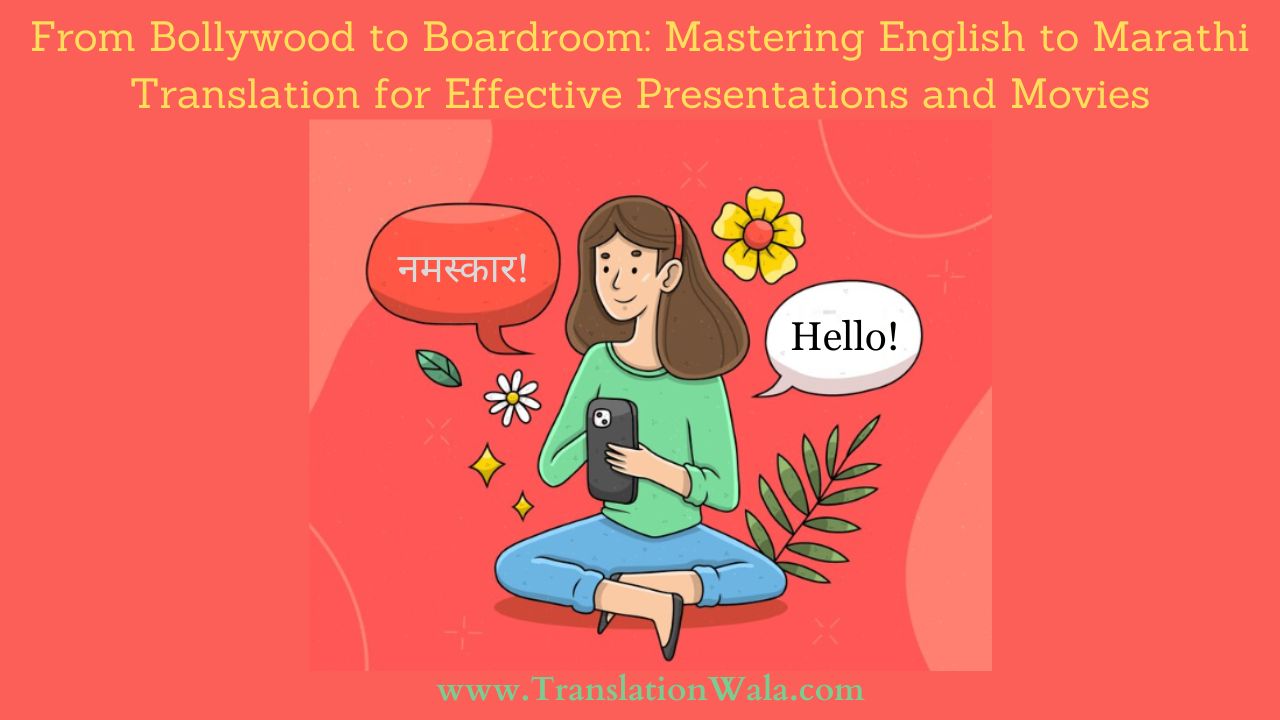English to Marathi Translation: You’re in a Mumbai meeting room that’s packed with people who can’t wait to hear your talk. You’ve carefully planned your message, adding facts and stories, and you’re now ready to give it. Then you have an idea: what if your audience, who mostly speak Marathi, doesn’t fully understand the subtleties of your English? It’s possible that the effect, the message, and the chance to connect will be lost.
On this level, translation is more than just changing words word-for-word. It helps people from different countries understand each other and becomes a strong way to get your point across. It’s not enough to be able to translate English to Marathi correctly for talks and movies; you also need to be able to capture the spirit, pace, and flavor of the original language and show it in a way that your Marathi audience can understand.
The Power of Marathi:
Let’s face it: English, even though it is spoken all over the world, doesn’t always capture the rich fabric of Indian feelings and experiences. With its rich literary history and lively slang, Marathi is the only language that can truly capture the details of our society. From the funny word “kitipasa” (ticklish) to the sad word “milakhat” (reunion), Marathi words paint vivid pictures and make us feel strong feelings that English words often have trouble expressing.
This means that talks will be more interesting and powerful. Imagine telling a client who speaks Marathi about your business idea. Instead of dry facts and words, you could show how dedicated you are with a Marathi saying like “Kaam karun ghar bhar” (Hard work fills the house). You could also use the image of a “navakshiti” (new moon), which means a fresh start and exciting opportunities, to talk about a complicated marketing plan.
Beyond the Words: The Art of Nuance:
Language translation is not an automatic process; it’s an artistic dance. A good translator knows that words mean more than what they say in the book. They carry meaning, humor, and emotional impact from one culture to another. See the word “masti” (fun). This word could be translated literally as “enjoyment,” but that word doesn’t capture the carefree spirit and contagious happiness that “masti” evokes. It would be more accurate to use the words “revelry” or “joie de vivre,” which are closer to what the word means to people who speak Marathi.
In movies, this little detail is even more important. Imagine translating a big hit movie from Bollywood to Marathi. The funny lines, the sad speeches, and the clever double entendres all need to be translated in a way that keeps their original humor, sadness, and cultural references. A good interpreter wouldn’t just translate the words; they would also understand the movie’s cultural background and the feelings it makes people feel, and they would bring those feelings to the Marathi audience.
Also Read: Breaking Barriers: English to Malayalam Translation Demystified
Mastering the Craft:
So, how does someone become an expert at translating from English to Marathi for movies and presentations? Here are some ideas:
- Immerse yourself in the language: Read Marathi books, watch Marathi movies, and talk to people who speak the language as their first language. The more you use the phrase, the better you will understand it.
- Develop a sensitivity to cultural nuances: Learn the unspoken rules of conversation, the humor, and the things that make people feel things in Marathi.
- Don’t be afraid to be creative: It’s not always possible to translate something literally. To get the meaning of the original language across, be ready to use creative words, phrases, and metaphors.
- Seek feedback: Ask expert speakers to look over your versions and give you feedback that will help you improve. Their advice will help you get better at what you do and make sure your point gets across clearly.
Conclusion
It’s not enough to be good at English to Marathi Translation, you need to be able to build bridges between countries, help people understand each other, and spread your message. You can become a better translator by learning the subtleties of both languages, respecting cultural settings, and being open to being creative. This way, you can translate not only words but also feelings, making sure that your movies and talks have a stronger, more important impact on your Marathi audience. Don’t forget that in Bollywood, where movies bring stories to life and boardrooms are full of ideas, translation is powerful because it can bring people together across language barriers.
